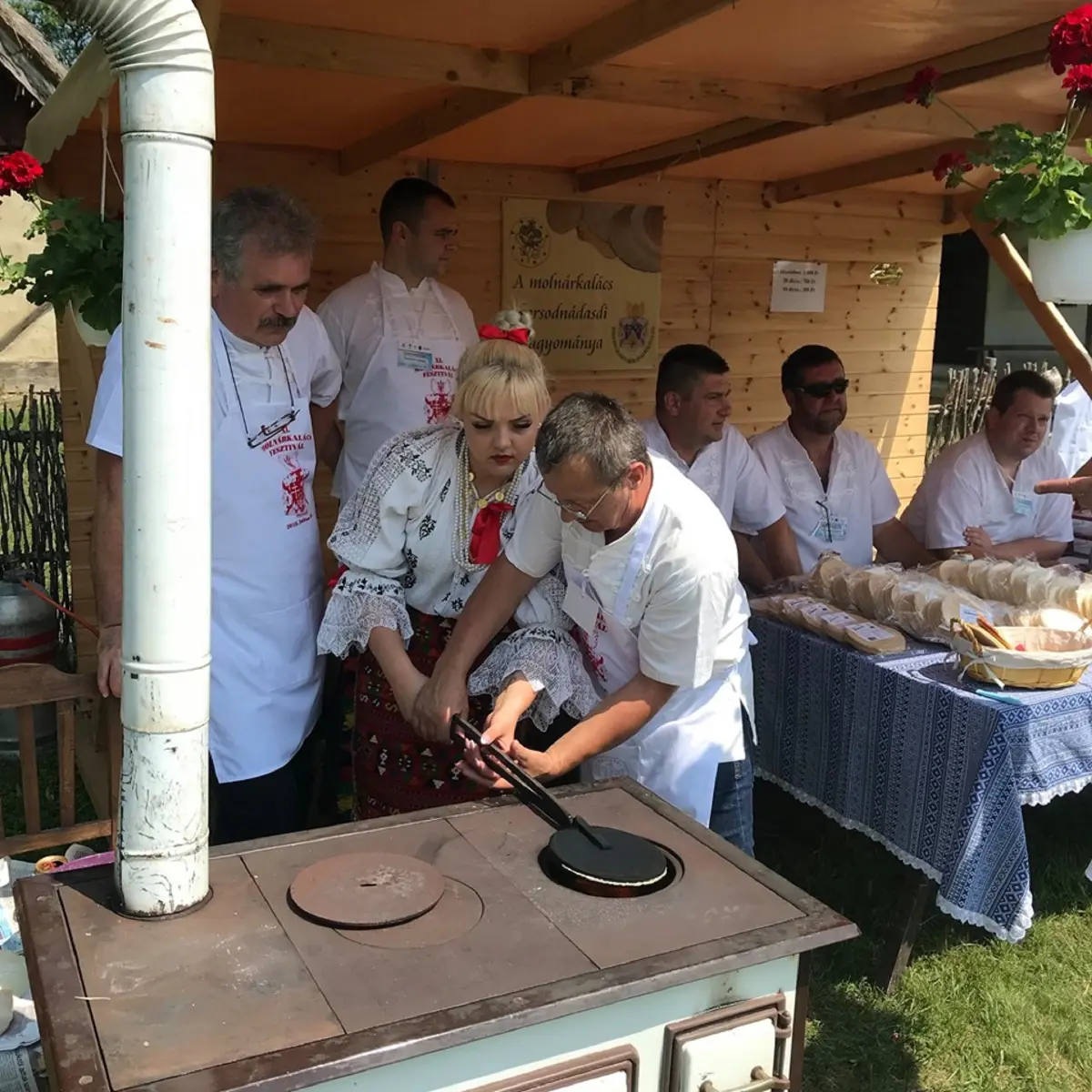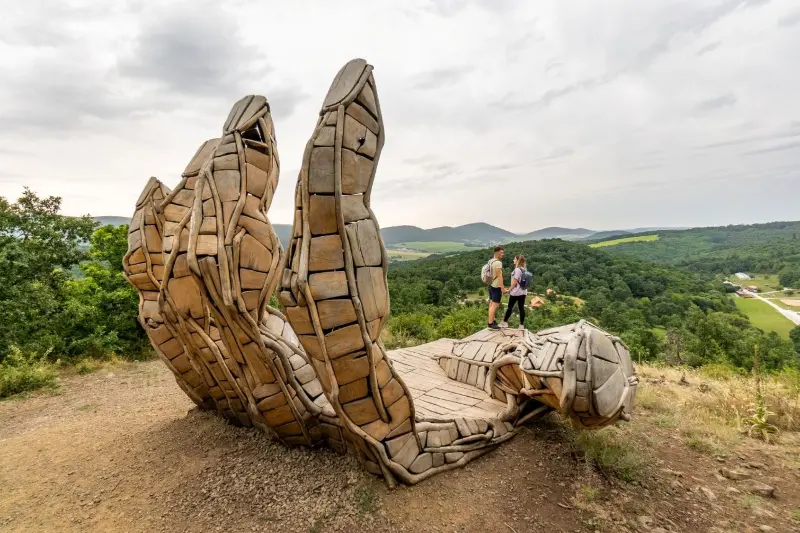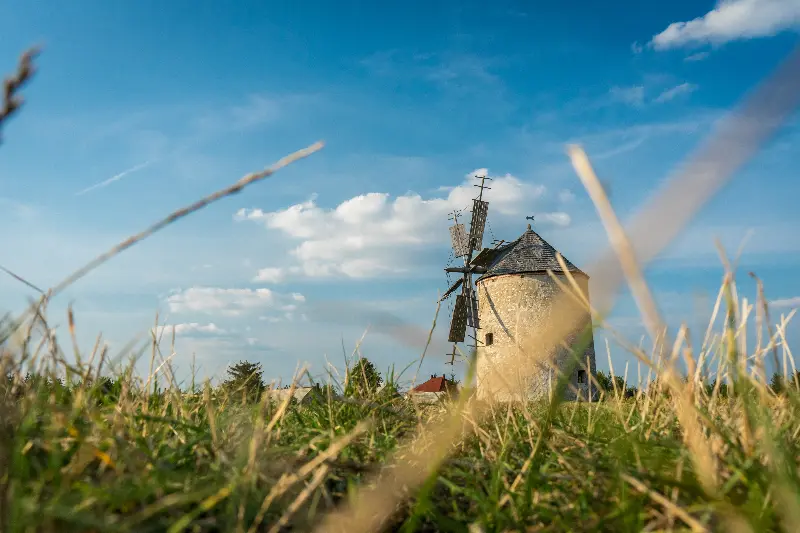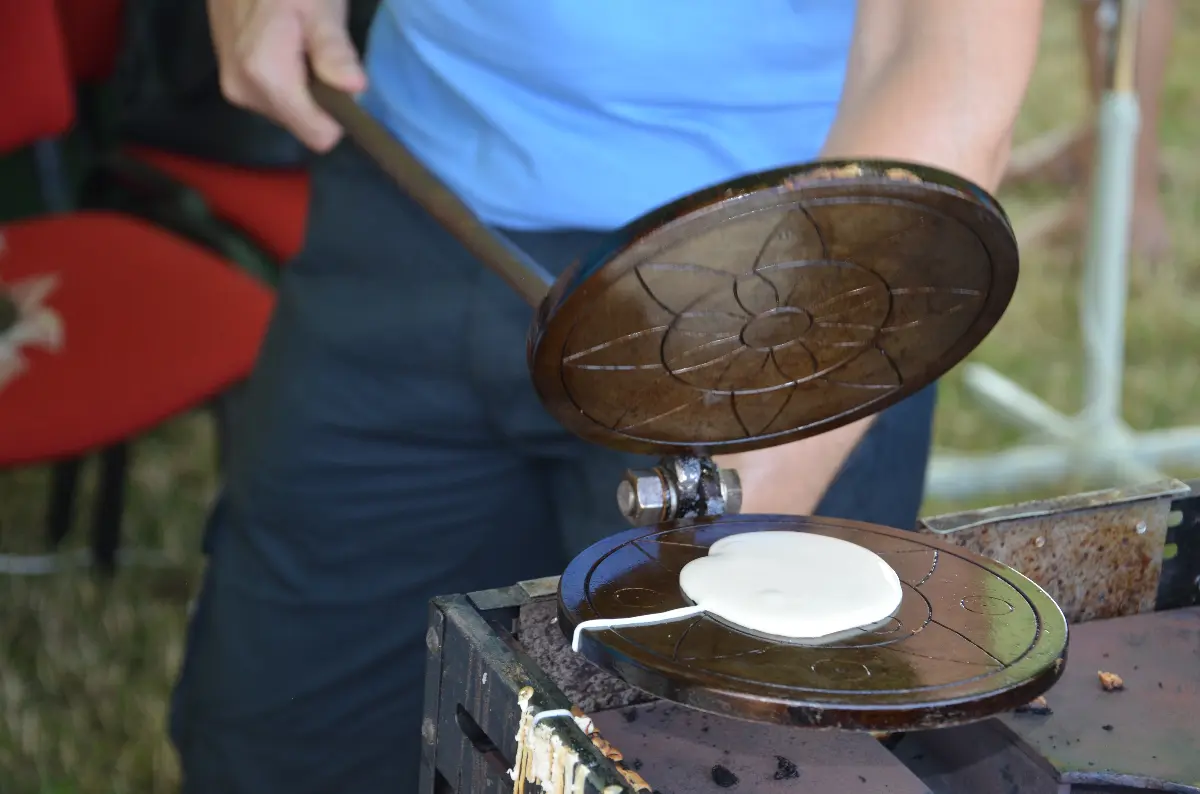
Helyszín címkék:
From a heavy industry centre to an ethnographic curiosity – The history of the miller’s wafers of Borsodnádasd
Méhész Zsuzsa
Two worlds in the valley in Borsod
Borsodnádasd lies in the deep embrace of the mountains: so much so that the sun only shines into the valley at certain hours of the day. Some of the houses almost overlook the hillside or the two lakes, and the inhabitants know the forest mushrooms and the roaring deer like someone knows the tinkling of the sixth tram in Budapest. Life in the simple village changed when coal was found in the area and a mine was opened – but the mine needed miners, too. Around here, people kept animals and used the land-pastures that they had carved out of the mountains. So there was nothing else left to do: mine engineers and other workers were lured here from the mining towns in the Highlands, and later, in 1864, the high-quality lignite led to the establishment of the steelworks, the Plate Factory, which provided work for thousands of people in the area.
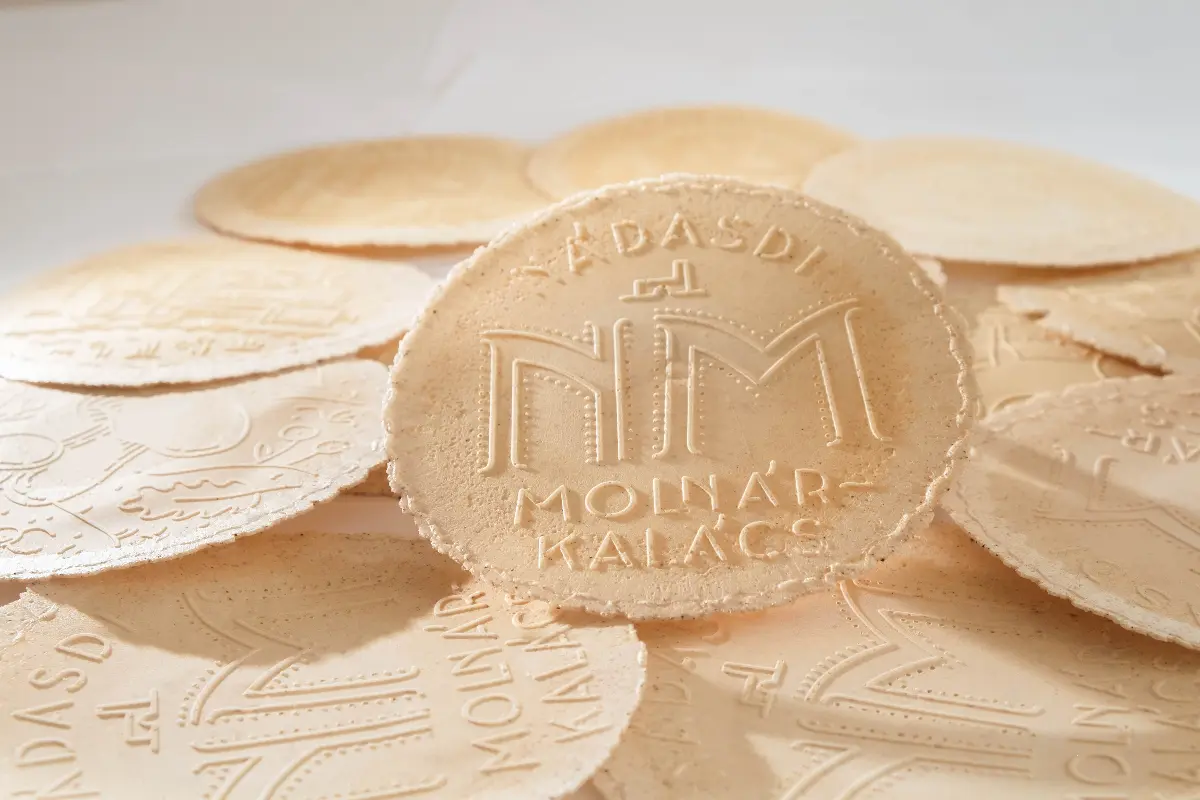
In the centre of the town, not only a huge industrial plant grew out of the ground: for the skilled city workforce attracted here, entire streets, an officers’ casino, a cinema, a tennis court, a restaurant, a library were built, two orchestras and a drama club were formed, and a steam train ran several times a day over the rails, and in winter, on the ice of the frozen lakes, a certain Miklós Neuwirth maintained a skating rink that made the townspeople weep with envy: the arts and sports scene was bustling. The barrier dividing Borsodnádasd also separated two separate worlds: the former peasant and rich farmer houses of the village core from the “colonies” of the new settlers. While the former were associated with cultivated-ploughed-irrigated areas and stables, the latter were typically associated with flower gardens. While in the village, there was a loom placed in the room, in the colony, there was a piano. Despite the differences in lifestyle and values, everyone was connected by the factory, as the place of work was called by the people who lived here.
Round or rolled wafer
A few decades ago, homemade miller’s wafers were considered a special sweet delicacy. They were paper-thin, round or cigar-shaped wafers made on individually patterned “baking irons”, then wrapped in paper and very carefully transported as decorated Easter eggs. No two round “irons” are alike: their engraved pattern is linked to family-specific traditions, which also appears on the miller’s wafers. Some of them are decorated with flowers, inscriptions or even a plane, indicating that the owner of the iron has managed to travel far and wide. The baking irons then became a family tradition, like the recipe and the science of baking: the finished wafers were crisp, crumbly, melting in your mouth, lightweight and sweet. Moreover, also unique and specific to the family. At weddings and special occasions, the irons were immediately brought out, and the women of Nádasd poured out the extremely fast-consumed delicacy without error or waste, which, according to legend, was once offered by the millers’ wives to the farmers waiting for their grain to be ground in the mill.
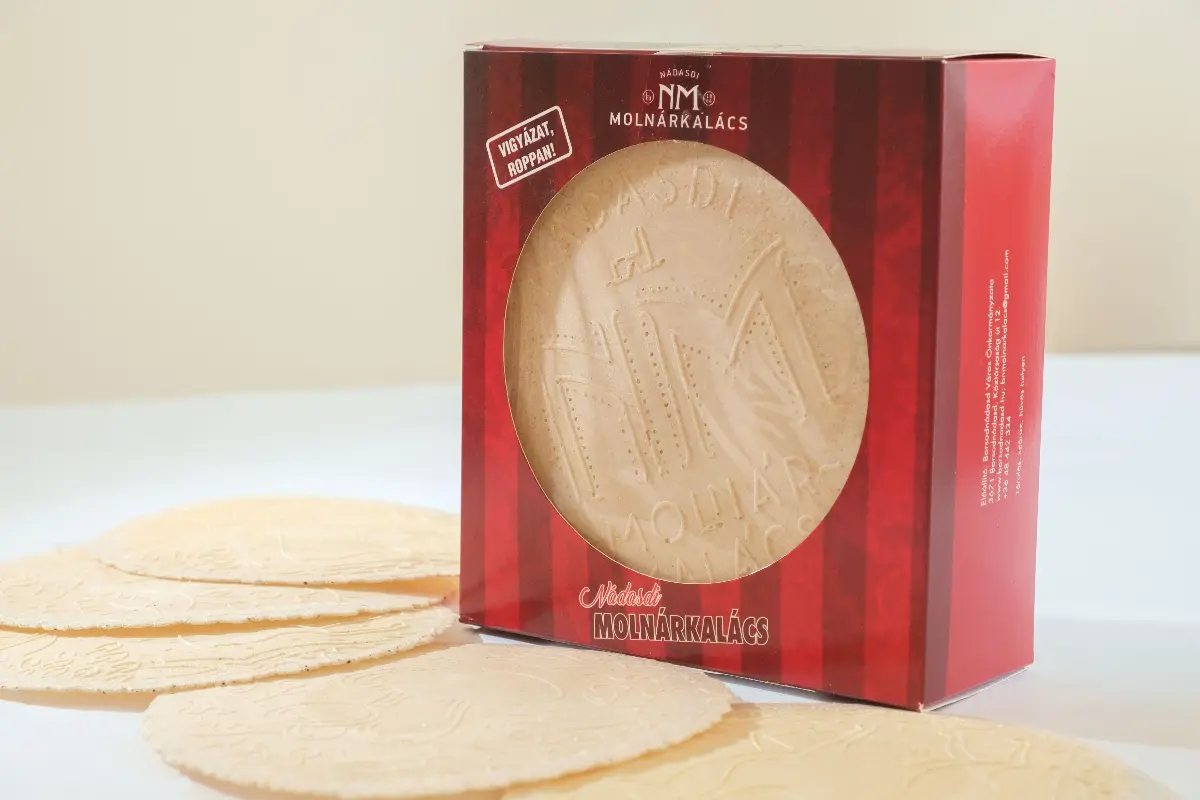
Coming from far away, becoming local
The custom of making wafers originated in Germany or the German Lowlands, with traces in Hungary dating back to the Renaissance era, but it may also have been brought directly from far away by the German-speaking people with German traditions of the Highlands who settled there. It seems that teaching singing in Borsodnádasd is also a vocation as a local historian. The tradition of making miller’s wafers was started by the former singing teacher of the local school, Dr. Pál Nemcsik, who found 126 baking irons in the seventies. Later, Tibor Sági, who inherited both positions, undertook to preserve for posterity the history of the baking irons and the slowly fading miller’s wafers, which had begun to fall into oblivion and were placed at that time in attics and chambers. Tibor also came from further afield and became a local – like the subject he researched and represented. He reopened the Local History Collection, which had been dismantled several times, and wrote books and articles on the tradition and patterns of the miller’s wafer and baking irons. But he did not only live for the theoretical work: the somewhat forgotten tradition was given a new impetus: old recipes were found and the baking irons were made to glow: a festival was organised around them and they were presented in many parts of the country, including also the Szentendre Skanzen.
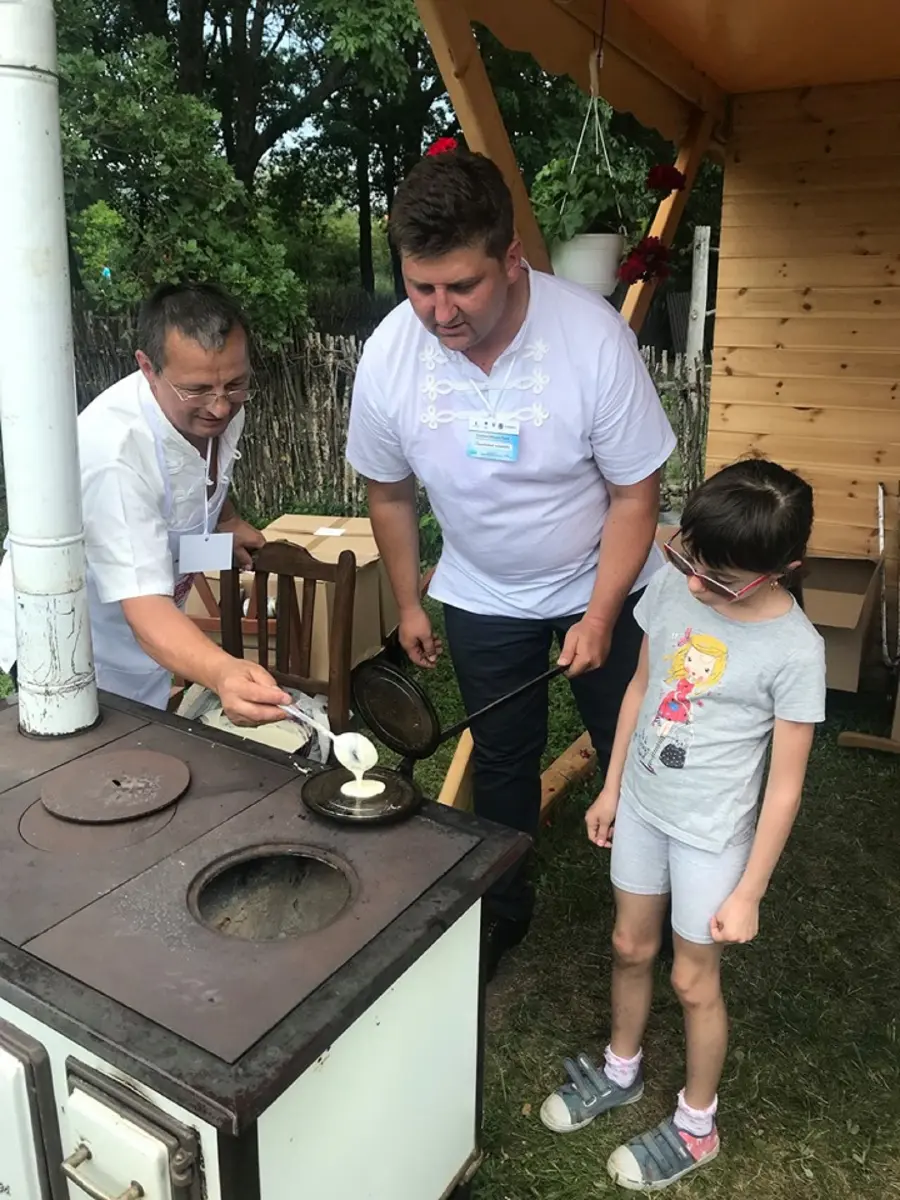
New impetus
The Plate Factory did not only mean just livelihood: it was part of life. Its closure has not only put people out of work, but has also destroyed a crucial part of their existence. In the middle of the village, all that remains of the once booming, ever-expanding factory are sad, abandoned ruins – and a reminder of better times. But not only the old baking irons, once made in the factory as a “side job”, have been preserved: the people of Nádasd now also make miller’s wafers in the local small factory on “large scale”. The old tradition creates community, the factory creates jobs, and the miller’s wafer gives something important back to the locals: real value, a piece of the past. And we just love it because it’s special. Especially if you also know the story behind it.
